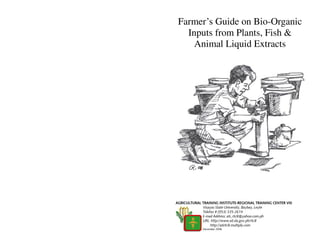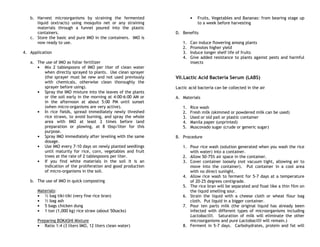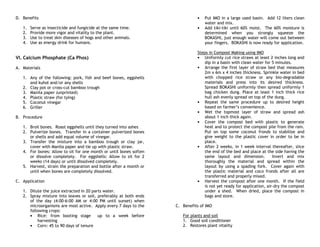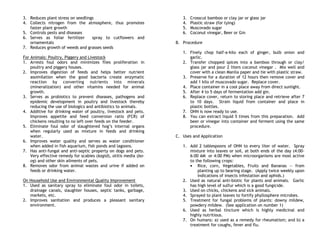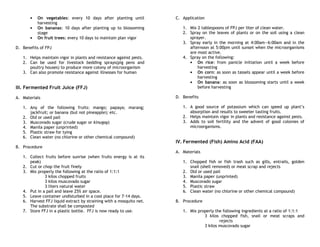The document is a farmer's guide on bio-organic inputs, focusing on alternatives to inorganic fertilizers due to rising costs. It details various bio-organic inputs such as indigenous microorganisms, fermented plant juices, and lactic acid bacteria serum, along with preparation methods and application benefits. The guide aims to assist farmers in improving their agricultural practices and sustainability through the use of organic materials.
